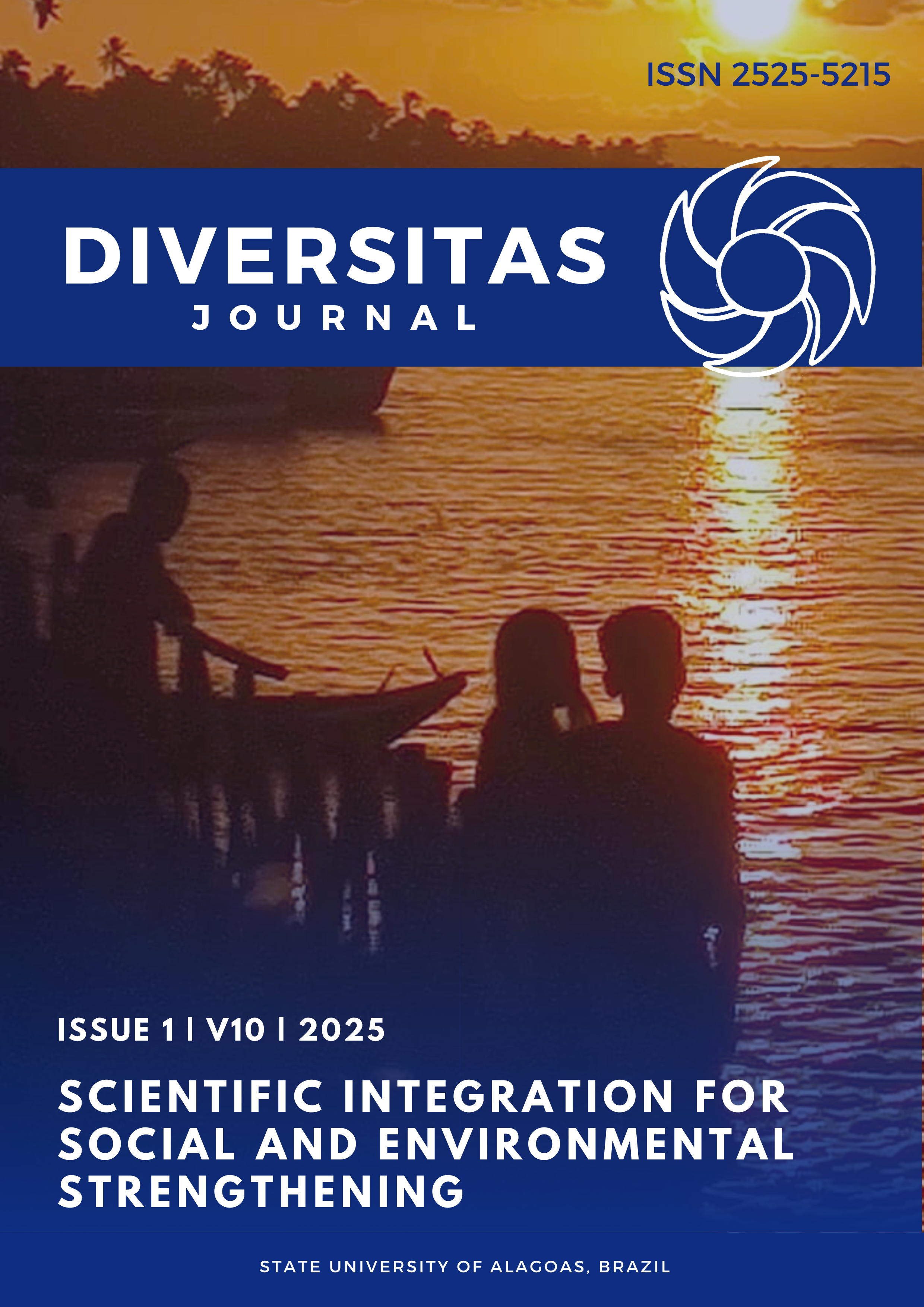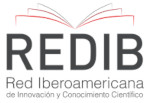Environmental parameters and their influence on the thermal stress of buffaloes in the Pajeú Sertão, Brazil
DOI:
https://doi.org/10.48017/dj.v10i1.3190Keywords:
Bioclimatology, Heat, Climate, StressAbstract
This study evaluated the impact of climatic conditions on the thermal comfort and feed intake of buffaloes in the semi-arid region of Pernambuco. Climate data were collected over 13 months, from May 2023 to May 2024, at the Meteorological Station of the Federal Rural University of Pernambuco (UFRPE) in Serra Talhada. The variables analyzed included air temperature, relative humidity, dew point, total solar radiation, and rainfall. Based on these data, the Temperature-Humidity Index (THI) and Feed Intake Reduction (FIR) were calculated. The results indicated that, for most of the year, temperatures exceeded the optimal range for buffalo thermal comfort, especially during the dry months. The high THI, driven by high temperatures and low humidity, pointed to significant thermal discomfort. This discomfort translated into a substantial reduction in dry matter intake by the animals, negatively impacting meat and milk production. The bioclimatic conditions in the studied region pose challenges to buffalo production, with periods of thermal stress leading to productivity losses. The adoption of appropriate management practices is essential to mitigate these effects and improve animal welfare and productivity, reducing economic losses in production.
Metrics
References
Cardoso, L. S. A. (2023). Influência do clima na produção e no conforto térmico de bubalinos. Univer-sidade Federal Rural da Amazônia, Campus Belém, PA. http://bdta.ufra.edu.br/jspui/handle/123456789/2861
Hahn, G. L., & Osburn, D. D. (1969). Feasibility of summer environmental control for dairy cattle based on expected production losses. Transactions of the ASAE. American Society of Agri-cultural Engineers, 12(4), 0448–0451. https://doi.org/10.13031/2013.38862
Klosowski, E. S., Campos, A. T., de Campos, A. T., & Gasparino, E. (2002). Estimativa do declínio na produção de leite, em período de verão, para Maringá-PR, v. 10, n. 2. Revista Brasileira de Agrometeorologia, 283–288.
Marafon, A., & da Silva, W. L. (2022). CRIAÇÃO DE BÚFALOS: CARACTERÍSTICAS, PRODUÇÃO, VANTAGENS E DESAFIOS DO MERCADO, v. 6, n. 4. Revista Alomorfia, 548–561.
Milhorance, C., Sabourin, E., & Mendes, P. (2021). Adaptação às mudanças climáticas no Semiárido brasileiro: desafios de coordenação e implementação de políticas públicas. Em A ação pú-blica de adaptação da agricultura à mudança climática no Nordeste semiárido brasilei-ro (pp. 81–98). E-papers Serviços Editoriais.
Oliveira, L. M. F. de, Yanagi Junior, T., Ferreira, E., Carvalho, L. G. de, & Silva, M. P. da. (2006). Zo-neamento bioclimático da região sudeste do Brasil para o conforto térmico animal e huma-no. Engenharia agrícola, 26(3), 823–831. https://doi.org/10.1590/s0100-69162006000300020
Silva, R.G. Introdução à bioclimatologia animal. São Paulo: Nobel, 2000. 286p
Silva, J. A. R. de. (2015). Thermal comfort indices of female Murrah buffaloes reared in the Eastern Amazon. International Journal Of Biometeorology, [S.L.], v. 59, n. 9, p. 1261-1267, 4 jun. 2015. Springer Science and Business Media LLC. http://dx.doi.org/10.1007/s00484-014-0937-y.
Silva Neto, M. A. da, Jesus, J. E. G. de, Montenegro, A. A. de A., Sousa, L. D. B. de, Lins, F. A. C., & Chagas, A. M. S. das. (2022). Parâmetros biofísicos como instrumento analítico de degrada-ção do solo em bacia experimental do semiárido pernambucano. Agrometeoros, 30. https://doi.org/10.31062/agrom.v30.e026989
Souza Junior, J. B. F. de, Domingos, H. G. T., Silva, R. B., & Lima, R. N. de. (2008). Termorregulação em búfalos manejados em ambiente tropical. PubVet, 2(10), 1–21. https://doi.org/10.31533/pubvet.v02n10a396
Thom, E. C. (1959). The discomfort index. Weatherwise, 12(2), 57–61. https://doi.org/10.1080/00431672.1959.9926960
Umar, Sofi Imran Ul et al. (2021). Delineation of temperature-humidity index (THI) as indicator of heat stress in riverine buffaloes (Bubalus bubalis) of a sub-tropical Indian region. Cell Stress And Chaperones, [S.L.], v. 26, n. 4, p. 657-669, jul. 2021. Elsevier BV. http://dx.doi.org/10.1007/s12192-021-01209-1.
Downloads
Published
How to Cite
Issue
Section
License
Copyright (c) 2025 Ygor Tállisson Xavier Trindade, Rebeca Medeiros Trindade, Thaís Fernanda Do Nascimento, Rodrigo Barbosa de Medeiros, Keyla Laura de Lira Santos

This work is licensed under a Creative Commons Attribution 4.0 International License.
The Diversitas Journal expresses that the articles are the sole responsibility of the Authors, who are familiar with Brazilian and international legislation.
Articles are peer-reviewed and care should be taken to warn of the possible incidence of plagiarism. However, plagiarism is an indisputable action by the authors.
The violation of copyright is a crime, provided for in article 184 of the Brazilian Penal Code: “Art. 184 Violating copyright and related rights: Penalty - detention, from 3 (three) months to 1 (one) year, or fine. § 1 If the violation consists of total or partial reproduction, for the purpose of direct or indirect profit, by any means or process, of intellectual work, interpretation, performance or phonogram, without the express authorization of the author, the performer, the producer , as the case may be, or whoever represents them: Penalty - imprisonment, from 2 (two) to 4 (four) years, and a fine. ”


















